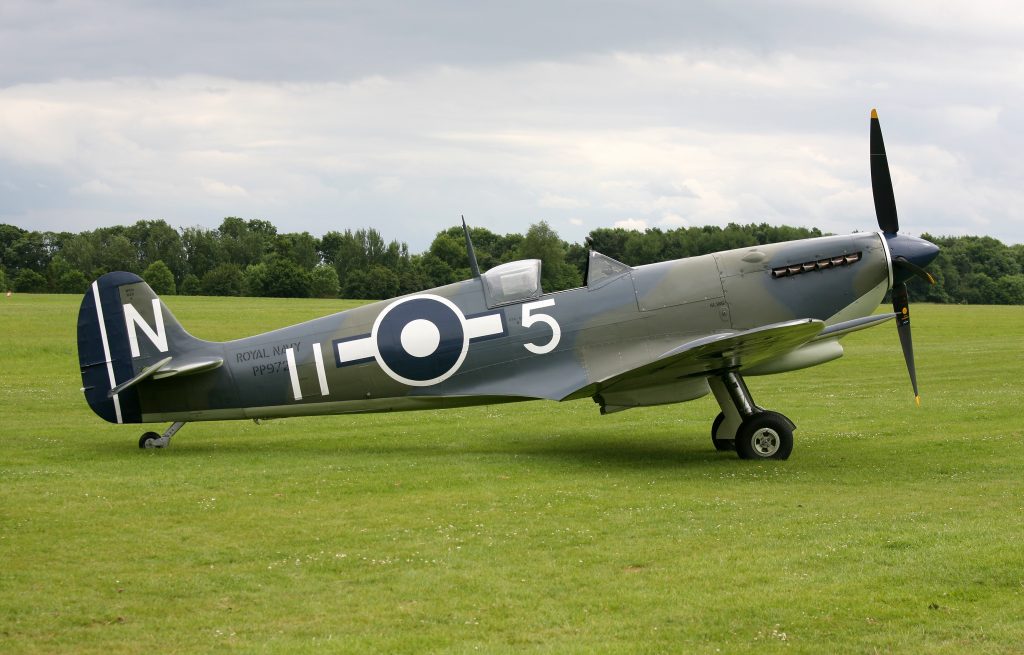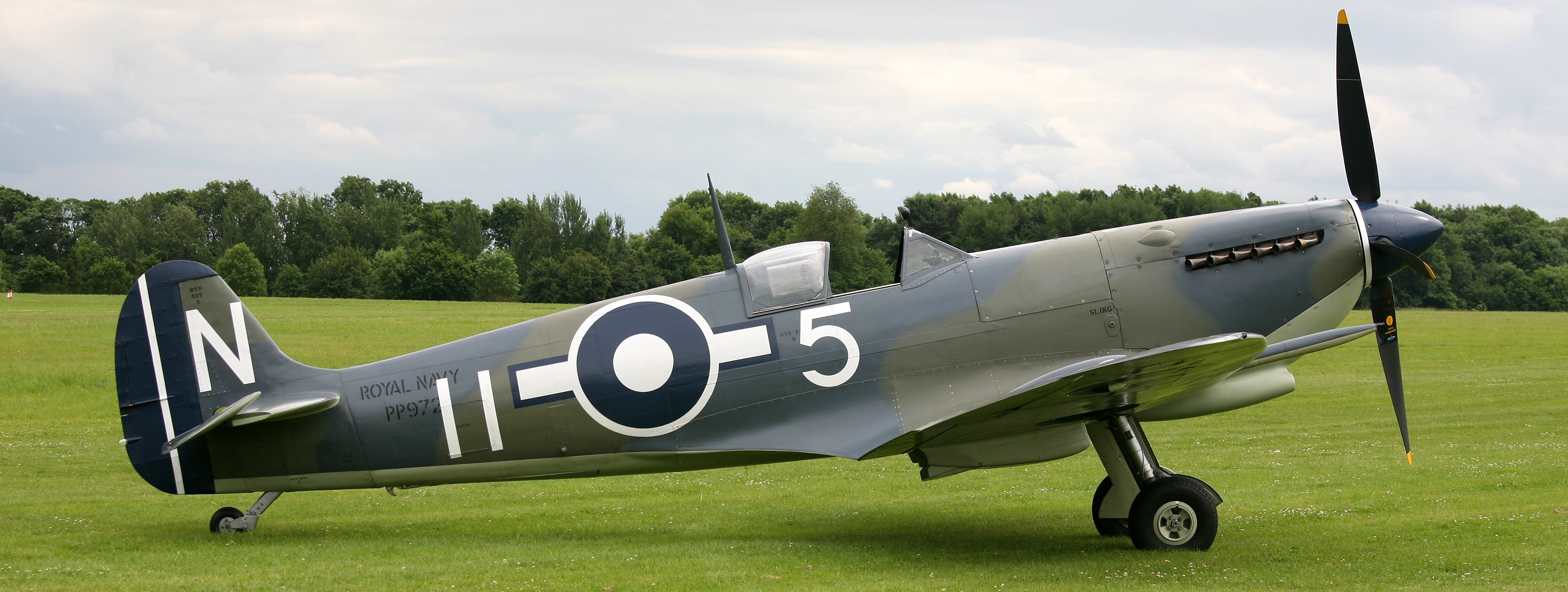GROWING CONCERN HISTORIC AIRCRAFT ARE DEPARTING THE UK FOR GOOD
HISTORIC AIRCRAFT ASSOCIATION (HAA) CALLS FOR THE CREATION OF A WATCHLIST TO PROTECT OUR FLYING ‘NATIONAL TREASURES’
Press release January 2021
BRITAIN is losing irreplaceable, historically-important aircraft to overseas collectors and museums as owners and pilots give up the battle to keep their treasured machines airborne due to the increasing demands of burdensome regulations.
Eighty years ago aircraft such as the iconic Spitfire and Hurricane saved the nation from Nazi tyranny – now these irreplaceable aircraft need the nation to save them from overseas buyers waiting to swoop as owners and pilots tire of fighting over-zealous regulators.
Notable aircraft that moved abroad in recent years are Spitfire XVI TB885 to Holland, P51D ‘Ferocious Frankie’ owned previously by the Old Flying Machine Co and now resident in Turkey. An Hispano Aviación HA-1109 – the Spanish Messerschmitt 109 fighter, has left the UK to Hungary recently. There are two more UK based Spitfires that are leaving the UK to go abroad but due to client confidentiality details on these sales are not in the public domain.
Sadly, on the historic jet aircraft scene, UK based classic aircraft have been declining in numbers and the country’s very own Vulcan is no longer flying because of regulatory constraints. Hawker Hunters were grounded following the Shoreham accident, and because of continuing restrictions they have been steadily moving to new owners abroad. Classic jets such as the Meteor and Vampire have also moved to new owners outside the UK. The UK jet heritage is dwindling steadily.
In response, the Historic Aircraft Association (HAA), which represents owners and operators of airworthy historic aeroplanes, is calling for the drawing up of a ‘watchlist’ of the Top 10 aircraft which should be given ‘National Treasure’ status.
These include the mighty Lancaster bomber, the iconic Spitfire and Hurricane but also the Fairey Swordfish, the 1930s Hawker Fury and the Bleriot XI which, built in 1909, is the oldest flying aircraft in the UK today. Selection is based on their social relevance, uniqueness and historical value.
It is intended the creation of a watchlist will alert Government to the need for changes in the safety oversight regulation of historic aircraft. The removal of unnecessarily risk-averse operational constraints on national treasures would persuade owners not to sell these aircraft abroad, but keep them flying in the UK where in former years we are renowned for air shows and flying demonstrations.
The HAA’s call to action is accompanied by a second tier of ‘Blue Plaque’ aircraft, which would include those of ‘Significant Historical Importance’ such as the Duxford-based Bristol Blenheim and the B-17 ‘Sally B’, as well as aircraft operated by the Shuttleworth Collection, including the hundred year old Bristol F.2B, whose Rolls-Royce Falcon is the oldest working Rolls-Royce aero engine in the world.
There would then follow aircraft further categories such as ‘Significant’, ‘Noteworthy’ and ‘Important’. These would include the 1930’s Hawker Nimrod I and II biplane fighters; American heavy metal WWII fighters including P-40, P-47 and P-51s that flew from British airfields in the 1940’s, and more esoteric types such as Yaks and those Hispano ‘Buchon’ Messerschmitt 109 fighters.
HAA Chairman Wally Epton said: “Britain has been a world leader in aviation from the start and we believe that these aircraft, including some from other nations, represent a vital part of the UK’s aviation heritage which must be preserved for future generations.”
Epton, who is a former BBMF Spitfire and Hurricane display pilot who also acted as the “enemy” flying the Me108 Taifun at air shows, and today is the owner of a 1942 de Havilland Tiger Moth biplane, said: “We quite rightly list our historic buildings to protect them from the bulldozer, but now is the time to ensure we protect this extraordinary collection of aircraft which have so enriched the 20th Century development of aviation but also, literally, prevented our country from invasion.”
“Our museums do a great job, but people also want to see these vintage aircraft in the air, entertaining the crowd and evoking the spirit of Britain’s aviation pioneers. Recent changes in air display rules have caused some pilots to withdraw from the display world, and risk-averse regulations introduced by the CAA are persuading owners to dispose of their aircraft with too many being sold abroad.”
The HAA recognises and understands fully the “how”, the “why” and the “wherefore” that puts heritage and historic aircraft into the air. We all know that without the international philanthropy of wealthy owners none of these iconic aircraft would be flying. The restoration to flight of vintage aircraft here in the UK is one of this country’s leading businesses of excellence that thrives on the international exchange of this wealth. That’s the business and we all get that.
Just to put this topic in perspective the suggestion of giving due recognition to heritage aircraft originated from within the All Party Parliamentary Group for GA – Heritage Working Group late last year. It was floated by the late Dr Robert Pleming, Joint Chair of the Group, endorsed by Robert Courts MP, Chairman of the APPG GA Heritage Working Group at the time, and was moved forward by the Heritage Working Group Steve Slater as a list of flying ‘National Treasures’. This APPG GA proposal to place historic aircraft having heritage value (not financial) in a category similar to that of heritage buildings, ships, railway engines and vehicles was wholly supported by the HAA. A register of aircraft that are currently airworthy was drawn up to ensure that historically important aircraft would be protected for future generations and granted recognition in the UK by focussing public attention on their importance. In turn the HAA put forward the list through the APPG GA to earn Government support.
The proposal was never intended in any way to be used as a “STOP” button as has been extrapolated by some people.
It is a fact that in the UK we do have an Export Advisory Committee (EAC) that can be consulted if the proposed export of any work of art is considered to be not in the best interests of British heritage. Our understanding is that machines including motor vehicles over a certain age, ships of historical importance and even aeroplanes are considered to be art however the EAC would only be consulted by interested parties when a particular subject is considered extremely worthy of retaining in Britain. The interested parties would be art galleries and museums, or any representative organisation that considered the export of a particular object should be reviewed. The EAC would only review cases that are unique for some reason.
It was never part of the HAA’s idea that aircraft imported into the UK for restoration to airworthy by UK based businesses should be subject to any constraint on re-export. The possibility exists that if an identified existing national treasure were to be sold, then the Export Committee might consider placing a hold on that export until a UK owner / interested buyer could find the matching cash. There is the very remote possibility that this could be applied to an historic aircraft but it would clearly be nonsense to prevent what would amount to be the re-export of a foreign-owned aircraft brought into the UK for restoration. We can reassure the UK historic aircraft restoration industry and its international clients that the HAA is not campaigning to prevent an aircraft brought into the UK for restoration from leaving these shores. Far from it – we want the historic aircraft industry to thrive.
The HAA hopes that what will drop out of this debate is that those who are involved in the UK historic aircraft restoration industry will use the HAA more in the future as their representative voice to work with Government, the CAA and the wider aviation community. We need to get air displays going again at the levels we enjoyed before Shoreham. The HAA believes we can help the CAA to get over Shoreham, and help them effectively manage historic aircraft safety for the benefit of all. For that campaign the whole of the historic aviation community needs to work together.
Note to editors:
The attached table lists the Top 10 National Treasures and the Blue Plaque, Significant, Noteworthy and Important categories would include as well as those listed above:
- the Battle of Britain Memorial Flight’s Mk II and Mk Vb Spitfires and Hurricane LF363
- the Shuttleworth Collection’s Bristol F.2B, Westland Lysander and DH60 Moth G-EBWD which, having been based at Old Warden since 1932, has been continuously resident at a single airfield longer than any other aircraft in aviation history.
- Naval aircraft include the Navy Wings Hawker Sea Fury fighter and a second Swordfish biplane, a selection of ex-military jets, along with the Army Historic Flight’s fixed wing and rotary types
- There are at least three Douglas DC-3/C47s on the list as well as at least 30 eligible Spitfires and ten Hurricanes
- Shuttleworth’s Sea Hurricane, Hawker Hind and Gloster Gladiator together with their 1910 Deperdussin, Miles Hawk Speed Six, Southern Martlet, Blackburn B2.
- Privately owned civil aircraft range from de Havilland Rapide biplane airliners and the DH84 Dragon and DH85 Dragonfly, Arrow Active and Blackburn B2, to the newly flown prototype Beagle Pup, Britain’s last production light aircraft.
Any list is inevitably subjective and the HAA would be delighted to hear of further suggestions!
For further information please contact: Andrew Smith at [email protected]
07958 114 304
NOTE Photo of the rare Seafire LF.IIIC PP972 ( Naval Spitfire) presently attracting interest from American buyers

During 1965 it was discovered by Jean Frélaut and acquired by him in January 1970 and he moved it to Vannes-Meucon and then later to Plescop by the 17th September 1977. Jean decided that a restoration to static display condition could be undertaken and it was restored into its French Naval colour scheme from its No.1 Flottille days. After restoration it was exhibited at the Musee de la Résistance at St.Marcel near Malestroit, Brittany from 1982 but had returned to VannesMeucon by July 1984.
Jean decided to part with the Seafire and it was acquired by Warbirds of Great Britain (WofGB) at Biggin Hill, Kent in 1988 and registered as G-BUAR on the 21st January 1992 and then relocated to their Bournemouth, Dorset base. The Seafire was moved around various workshops eventually ending up with Air Leasing Ltd at Bentwaters, Suffolk where after restoration it flew again on the 15th June 2015 with Richard Grace at the controls in a scheme depicting a Seafire of 880 (Naval) Squadron (FAA) of HMS Implacable.

